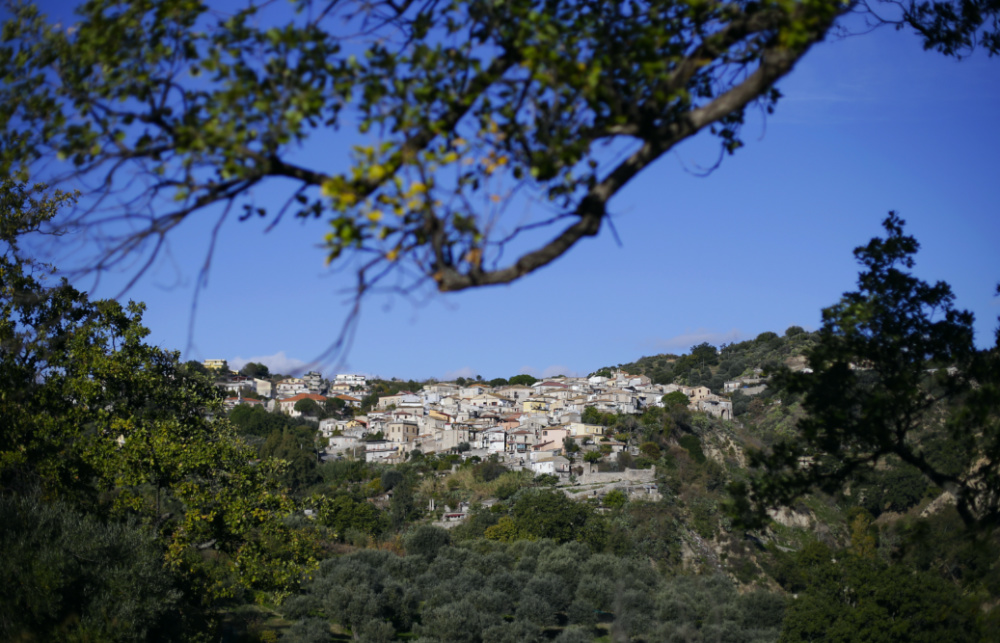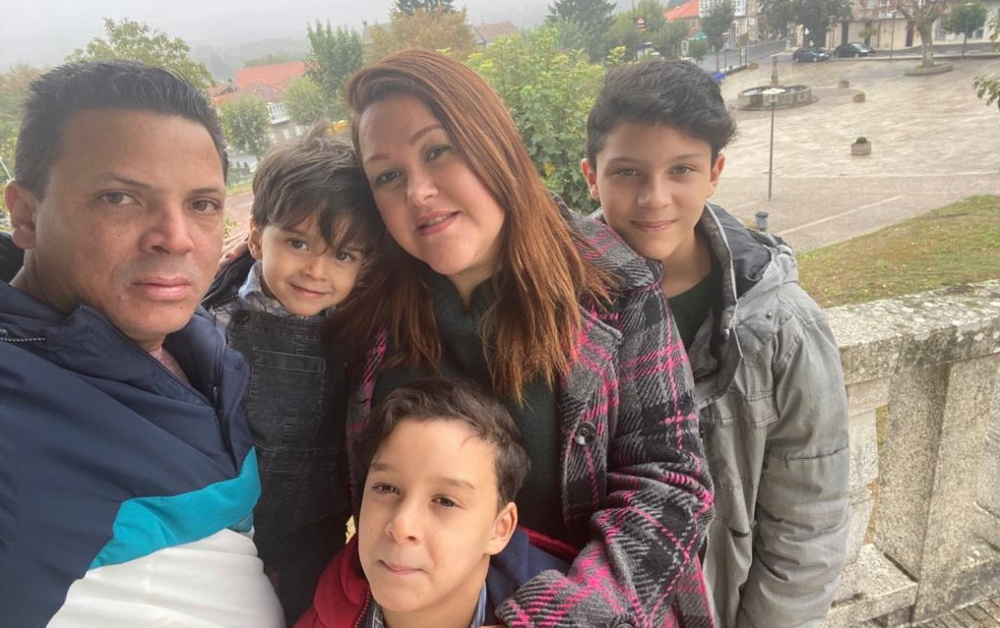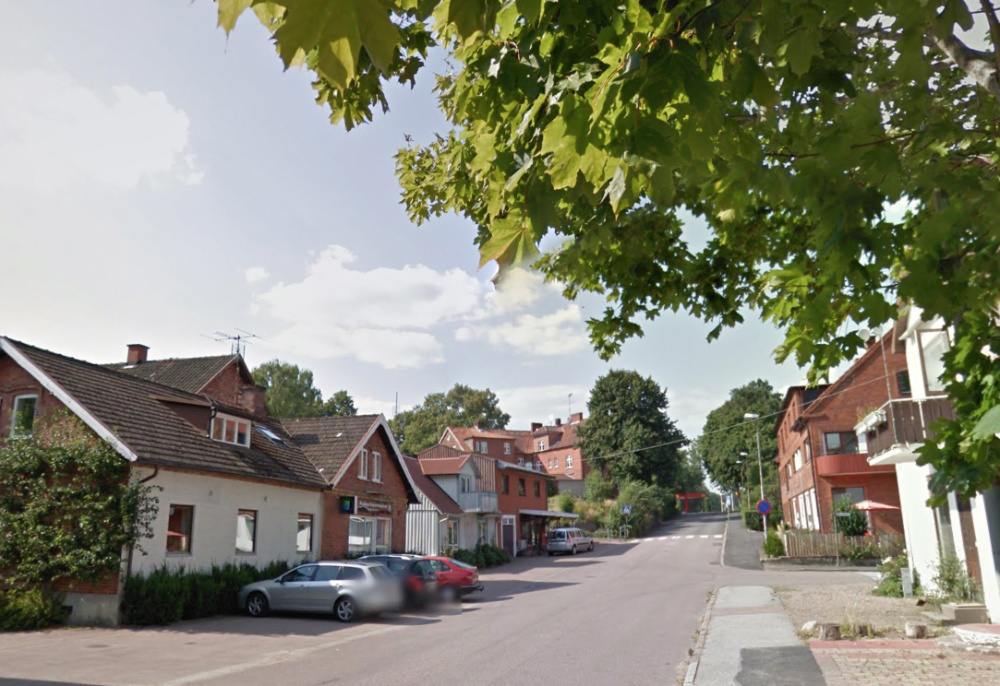
SOPHIE DAVIES, of Thomson Reuters Foundation, reports on how immigrants are bringing new life to struggling communities in Europe…
Barcelona, Spain
Thomson Reuters Foundation
When life in their native Venezuela became too much of a struggle, Catherine Negrin and her family upped sticks and moved thousands of miles away to northwestern Spain, which is trying to attract new inhabitants.
Despite well-paid jobs in the military and in teaching, Negrin said shortages and price hikes made getting their hands on everyday goods like food and medicine a real challenge in the capital Caracas.
In February, the couple and their three children resettled in a small village in Galicia – they already had relatives in the rural region and the cost of living was affordable, Negrin explained.
“Because of our economic situation and having three children, we couldn’t live in the city,” she told the Thomson Reuters Foundation.

Catherine Negrin and her family moved from their native Venezuela to Galicia, a depopulated area of northern Spain, in search of a better quality of life. PICTURE: Courtesy of Catherine Negrin
Negrin’s family relocated with help from the Confederation of Rural Development Centres (COCEDER), one of several initiatives aimed at repopulating Spain’s emptying interior by encouraging locals and foreigners to settle in remote areas.
While 85 per cent of Spain’s territory is made up of rural areas, only 20 per cent of the population live in them, according to the European Association for Information on Local Development, a non-profit based in Brussels.
“The impact of foreign [residents] in these depopulating areas is decisive…[It breaks the] vicious circle of population loss and, with it, [loss] of economic activity, services and such like, that lessen the appeal of these areas.”
– Maria Coto Sauras, a rural development expert at Red2Red.
Rural development experts say new immigrants can revive neglected rural areas by keeping afloat schools, businesses and basic services, such as transport, and injecting new life through entrepreneurial ventures.
“The impact of foreign [residents] in these depopulating areas is decisive,” said Maria Coto Sauras, a rural development expert at Red2Red, a Madrid-based public policy consultancy.
It breaks the “vicious circle of population loss and, with it, [loss] of economic activity, services and such like, that lessen the appeal of these areas,” she added.
In 2018, COCEDER launched an online platform called Back to the Village (or Volver Al Pueblo), which collates information for those considering a move to rural Spain, including job openings and houses and small businesses up for sale or rent.
The platform links up potential settlers with rural development centres in eight Spanish provinces, from where they can receive further advice and help with relocating if they decide to go ahead with a move.
But house prices could start rising in these sparsely populated areas, as months of confinement due to coronavirus lockdowns motivate some city dwellers in Europe to move to rural areas, real estate experts say.
In France, there has been a nearly 10 per cent jump in Parisians looking for homes in the countryside since February, in search of gardens and access to nature, according to a survey by French real estate portal SeLoger.

The town of Riace is seen in the southern Italian region of Calabria, on 22nd November, 2013. Riace is a small village in Calabria, a poor region in the south of Italy. Many of the village’s former residents left in search of better opportunities elsewhere in Italy or abroad. In recent years, however, the mayor Domenico Lucano has introduced a scheme to encourage immigrants to come to Riace and breathe new life into the village. The immigrant’s children have revitalised the local school, which suffered from a lack of students. PICTURE: Reuters/Max Rossi/File photo.
Policy experts say rural depopulation began in Spain in the 1960s and 1970s, when mechanisation made many agricultural workers redundant and masses of people moved to the cities looking for work.
The villages they left behind have been dubbed “ghost villages”, and in some of them an entire hamlet of several houses can be bought for less than €100,000.
Alongside COCEDER’s Back to the Village, a number of other schemes are trying to breathe new life into these villages, including the New Paths (Nuevos Senderos) initiative.
The project, run by the non-profit Cepaim Foundation, helps African immigrants find new jobs as shepherds or handymen.
The Living Villages (Pueblos Vivos) project offers free information and guidance to anyone considering a move to the countryside.
“[Our] success can be measured through the people we have helped take the step, see how they have improved their quality of life…closer to nature, less stressed, and with a cost of living more adapted to reality.”
– Sara Garcia Sanz, a spokeswoman for the Confederation of Rural Development Centres in Spain.
And a scheme launched earlier this year by the Towns with a Future Association, a non-governmental organisation, helps mostly Latin American migrants resettle in Spain’s rural areas.
Back to the Village, which over the past two years has been contacted by about 4,000 people and helped 54 people resettle, is already planning to expand, said Sara Garcia Sanz, a spokeswoman for COCEDER.
The goal is to grow the existing network of associations it works with, particularly to increase the number of jobs advertised on the site, she said.
“[Our] success can be measured through the people we have helped take the step, see how they have improved their quality of life…closer to nature, less stressed, and with a cost of living more adapted to reality,” she said.
The initiative is also set to become part of a larger programme known as POISES, which is subsidised by the EU’s European Social Fund, which promotes economic and social inclusion.
Neither the Spanish Ministry of Social Rights nor the Ministry for Ecological Transition and the Demographic Challenge were available for comment.

An image of the village of Rostanga in Sweden where a group of concerned parents started the Rostanga Together (or Rostanga Tillsammans) project in 2007. PICTURE: Courtesy of Google Maps.
Spain is not alone in Europe as it grapples with rural depopulation, with countries like Sweden, Austria, Finland, the Netherlands and Germany all hosting schemes that focus on bringing migrants to live in the countryside.
In Sweden, the Rostanga Together (or Rostanga Tillsammans) project was started by a group of parents in 2007 when they realised a local school in the small village of Rostanga was being threatened with closure due to population decline.
The parents set up a grant-independent shareholding company that raises money to invest in empty properties in the village, explained Nils Phillips, president of Rostanga Together.
When 300 refugees were placed in Rostanga’s asylum centre in 2015, the non-profit developed a joint initiative in which locals and asylum seekers worked together as volunteers to renovate the houses.
Some refugees who got permanent residency and chose to stay in the village are now renting the flats they helped renovate, as tenants in the development company, Phillips said.
“This is not an integration project, which is also why it’s successful. We work in property development and make things happen,” he said.
“It’s not about where you’re from, but about using your skills and getting involved…many got work offers because all of a sudden they were involved in a craftsmen’s network.”
But leaving behind a troubled homeland and resettling in a remote part of a foreign country – especially when you have no job to go to – can take its toll on a refugee’s mental health, say policy experts.
“They might have to deal with the post-traumatic stress of moving, so mental health services should be made available to them, too,” said Klara Foti, research manager at the European Foundation for the Improvement of Living and Working Conditions.
For Negrin, adopting a whole new way of life abroad has not always been easy. Struggling to find a job, she has started re-training in social care.
But, her husband found a job in the local metals industry right away, and her children are already settling in, Negrin said.
“There is another child around here from Honduras, with the same Latin roots. They get on well together,” she said.
“Our children have adapted very well to living in the countryside – more quickly than us. “





